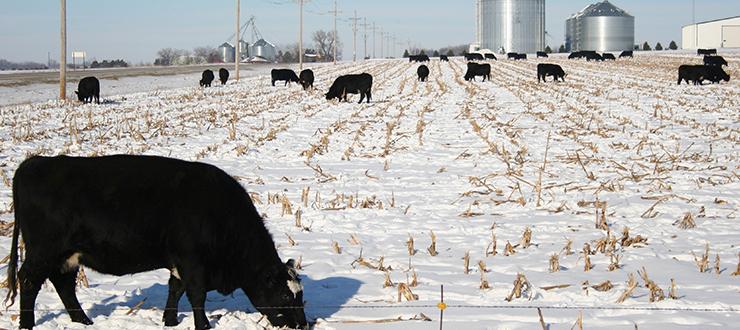
Winter forage pastures help farmers across the southern United States stretch their stockpiles of hay by prolonging the grazing season. A winter pasture supplements winter diets with healthy ryegrass or forage oats, allowing cattle to graze until spring. Planting a successful winter forage pasture begins with Prine.
Why Prine?
Ragan & Massey developed Prine Tetraploid using the University of Florida’s outstanding ryegrass breeding program (one the best in the country). It produces high yields and is rust and disease resistant. Prine was put through Yield Trials to gauge its performance.
How Much Do You Plant Per Acre?
For Prine and other ryegrass varieties, we recommend planting 30 pounds per acre with good equipment on a good seedbed. The key factors for planting at a successful rate are adequate coverage and planned grazing intensity. If a producer is looking to overseed with a broadcast spreader, use more than 50 pounds per acre. If the producer is choosing to drill the seed, 25 pounds per acre might be the sweet spot.
As for grazing intensity, it will be improved with a higher plant population per acre, therefore a higher seeding rate will pay off. If the producer plans to use hay or only graze a few animals, a lower seeding rate should be used as the plants will be taller at harvest and shade each other if the plant population is too high.
The same logic applies to forage oats. We recommend 100 pounds of oat seed per acre if planted alone or 65 pounds of oat seed if planted with Prine ryegrass (use 20 pounds of Prine). Oats should be planted on a prepared seedbed or with a drill so that there is about one inch of soil on top of the seed. It is common practice for producers to drill 65 pounds per acre of oats in one pass over the field and then broadcast 20 pounds per acre of Prine in another pass over the field.
What Defines a Good Seedbed?
Even though ryegrass and oats are easy to grow in almost any soil with adequate moisture, a good seedbed constitutes the firmness of soil and the depth of the planting.
Ryegrass in particular does not do well when planted deeper than a half-inch in heavy soils. Winter forages typically need ¼-inch to ½-inch depth and firm soil. A well–harrowed seedbed in light soils is likely, not firm enough, and rain will push seed too deep into the ground to germinate. A good test of soil firmness is to walk across the seedbed; if you sink in over the soles of your feet, it’s a good idea to pull something over it to firm it up. If your soil is too light, run a cultipacker over it to firm up the bed. (This will help grazing efforts as well as soft seedbeds, which are hard to graze if the weather stays wet).
What About My Spring Bermuda Grass?
Producers that utilize Bermuda grass pastures in spring can get rid of the winter ryegrass by grazing it very hard. As the temperatures climb in the spring well–grazed ryegrass can’t compete with the warm season Bermuda grass. If you find that your ryegrass is staying around longer than you like, simply turn more animals onto it for longer periods of time. Mother Nature will take care of the rest.
Prine’s proven results make for the best winter pastures. Find where to buy it from our many dealer locations.
